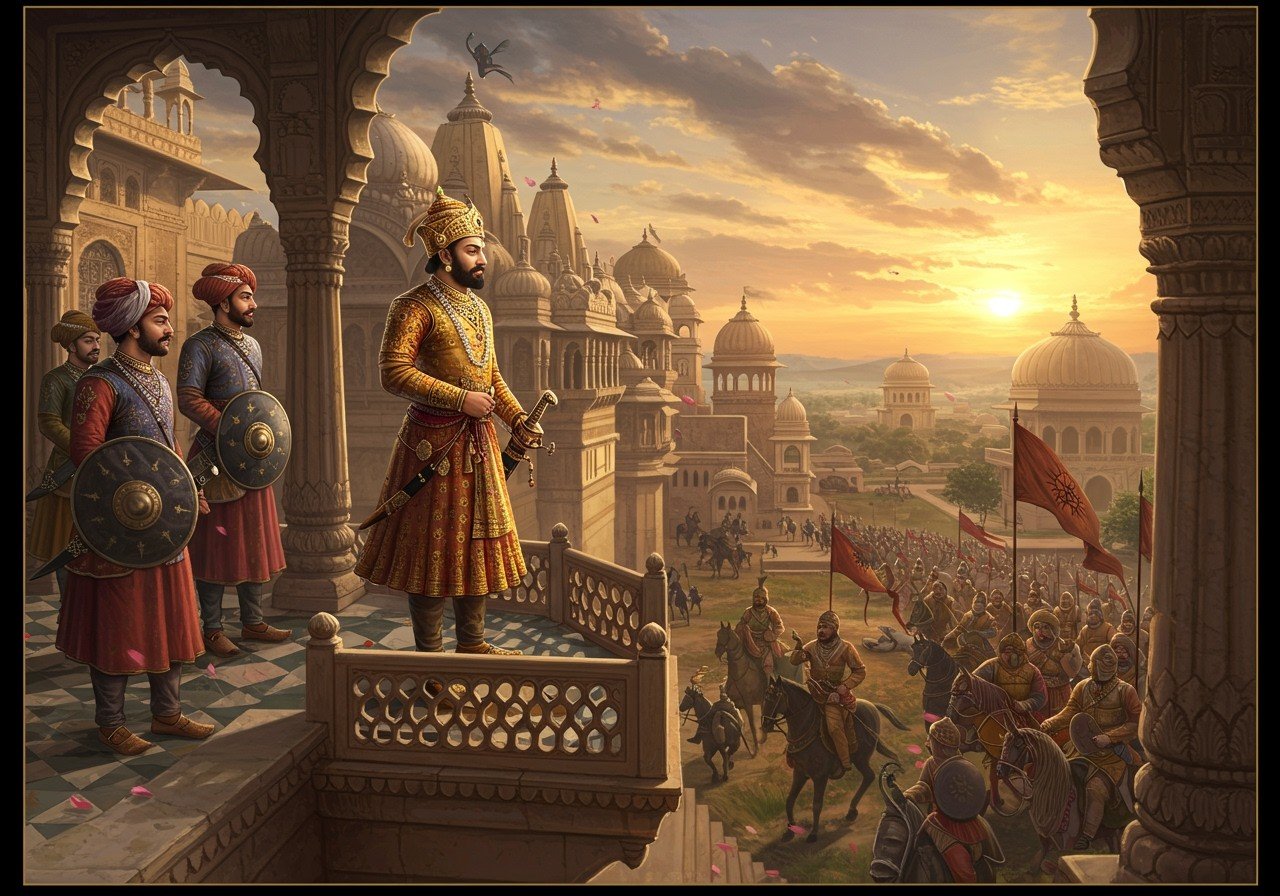
The Gurjara-Pratihara Dynasty, a prominent power in medieval India (8th-11th century CE), significantly shaped the subcontinent’s history and culture. This blog post delves into their origins, expansion, and eventual decline, offering insights into their political, cultural, and social impact. This information is valuable for history enthusiasts and those preparing for competitive exams like the UPSC.
Origins of the Gurjara-Pratihara Dynasty
Tracing Back to the 6th Century
The dynasty’s roots trace back to the 6th century. Discussions around their ethnicity continue, with debates focusing on Rajput or Gurjara origins. Early rulers established themselves in modern-day Gujarat and Rajasthan.
Role of Nagabhata I
While Harichandra is mentioned in some texts, Nagabhata I (around 8th century CE) is widely recognized as the founder of the Pratihara imperial line. The socio-political climate of early medieval India facilitated the Gurjara-Pratiharas’ ascent. They forged alliances with other powers, including the Rashtrakutas and Palas.
Early Administration
The dynasty’s initial administrative structure and military organization were crucial to their early success. Understanding these elements provides a foundation for comprehending their subsequent expansion.
Expansion and Consolidation
Nagabhata I’s Reign
Nagabhata I successfully repelled Arab incursions, expanding the dynasty’s territory. Kannauj, their capital, evolved into a major power center in Northern India.
Mihira Bhoja (9th Century CE)
Mihira Bhoja, a renowned ruler, further expanded the empire. His focus on strengthening the administrative system led to economic prosperity and significant cultural achievements.
Military Campaigns
The dynasty’s zenith was marked by military campaigns and conquests. Conflicts with the Rashtrakutas and Palas were defining events of this era.
Art and Architecture
Art, architecture, and literature flourished under their rule. Administrative reforms contributed significantly to the dynasty’s stability and growth.
Cultural and Social Impact
Art Contributions
The Gurjara-Pratiharas made significant contributions to Indian art and architecture, particularly through the construction of intricately carved temples and imposing forts. Their architectural style is recognizable for its elaborate designs.
Literature Patronage
Sanskrit flourished as the court language under the Gurjara-Pratiharas, resulting in a surge of literary works. The empire’s social structure encompassed diverse communities, with notable roles for women and a strong emphasis on Brahmanical traditions.
Trade Policies
The Gurjara-Pratiharas implemented policies that encouraged both regional and long-distance trade. Religiously, the empire witnessed the coexistence of Hinduism, Buddhism, and Jainism.
Decline and Fall
Factors of Decline
Internal strife and succession disputes weakened the dynasty considerably. External pressures, including invasions by the Rashtrakutas and later the Ghaznavids, further eroded their power.
Administrative Challenges
Administrative challenges and economic difficulties compounded the dynasty’s decline. The rise of regional powers like the Chandelas and Paramaras fragmented the empire.
End of Kannauj
The fall of Kannauj signaled the end of Gurjara-Pratihara dominance. However, their legacy continues to influence Indian history and culture.
Conclusion
The Gurjara-Pratihara Dynasty’s journey, from modest beginnings to a powerful empire and eventual decline, offers valuable insights into India’s historical evolution. Their contributions to art, architecture, literature, and administration remain significant aspects of India’s cultural heritage. Understanding their history allows us to appreciate the complexities of the past and the enduring spirit of cultural and social progress.
FAQs about The Gurjara-Pratihara Dynasty
Who were the Gurjara-Pratiharas? The Gurjara-Pratiharas were a powerful Indian dynasty that ruled from the 8th to the 11th century CE, known for resisting Arab invasions and their cultural contributions.
What is their significance in Indian history? They played a crucial role in defending India against Arab incursions and significantly contributed to the cultural and architectural landscape of the period.
Who founded the dynasty? Nagabhata I is considered the founder of the Pratihara imperial line, consolidating power and establishing the dynasty in the early 8th century CE.
What were their main achievements? Their key achievements include military prowess, resistance to Arab invasions, and significant contributions to art and architecture, particularly temple construction.
How did the dynasty end? The Gurjara-Pratihara Dynasty declined due to internal conflicts and invasions from other kingdoms, starting in the 10th century and ultimately losing power in the 11th century CE.
Connect With Your Heritage Through Poojn.in
The Gurjara-Pratihara Dynasty held deep reverence for Hindu deities, especially Lord Vishnu and his incarnations. Poojn.in offers authentic puja items to help you connect with this rich spiritual heritage:
-
Vishnu Worship Items: Explore our selection of pure copper and brass items for Vishnu puja, including asthamangala sets and Vishnu yantras, reflecting the dynasty’s devotion. Shop Vishnu puja items now.
-
Temple Worship Supplies: Find traditional puja thalis, bells, and deepak sets, crafted to match the specifications used in Pratihara-era temples. Browse our temple worship collection.


